Utah is a birdwatcher’s paradise. With its diverse landscape of mountains, deserts, and wetlands, the state boasts a stunning variety of bird species.
From the majestic Juniper Titmouse to the tiny Northern Pygmy-Owl, Utah’s avian inhabitants never fail to amaze and delight.
Whether you’re a seasoned birder or a curious novice, exploring the state’s natural wonders will surely reward you with breathtaking sights and sounds.
In this article, we’ll take a closer look at the 29 most common birds in Utah, each with its own unique features and behaviors that make them a wonder to behold.
So grab your binoculars, lace up your hiking boots, and let’s discover the feathered treasures of the Beehive State.
| Image | Bird | Features | Price |
|---|---|---|---|
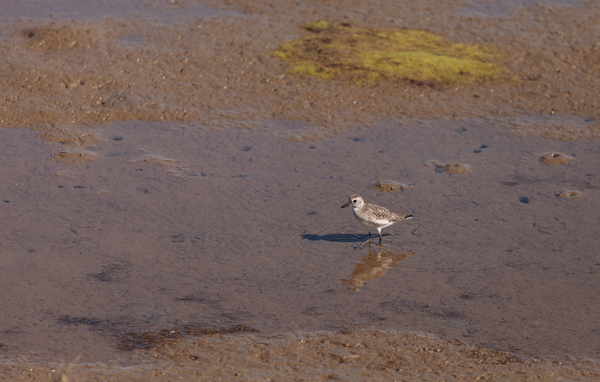 |
| 9.7 | Check Price |
 |
| 9.5 | Check Price |
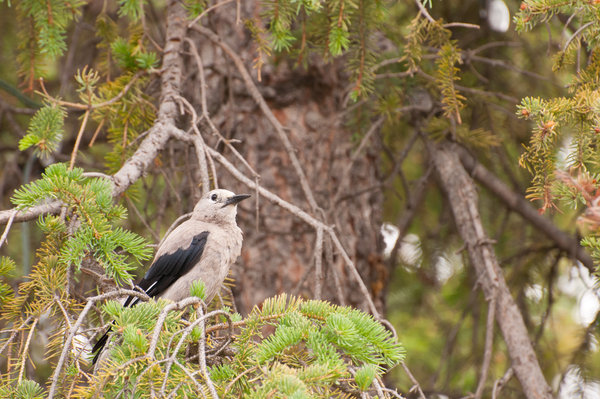 |
| 9.1 | Check Price |
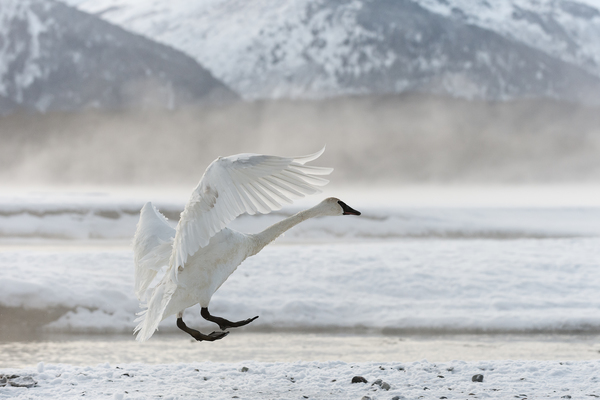 |
| 8.8 | Check Price |
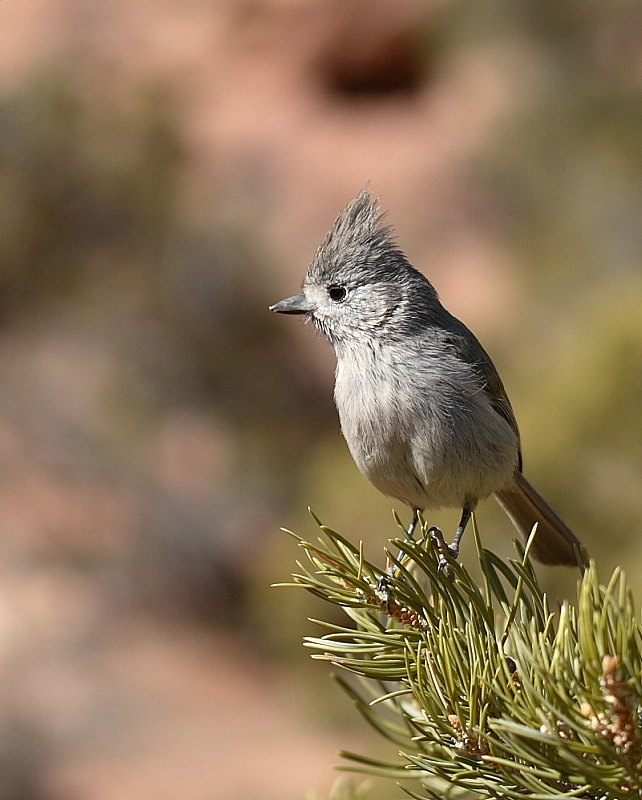 |
| 8.6 | Check Price |
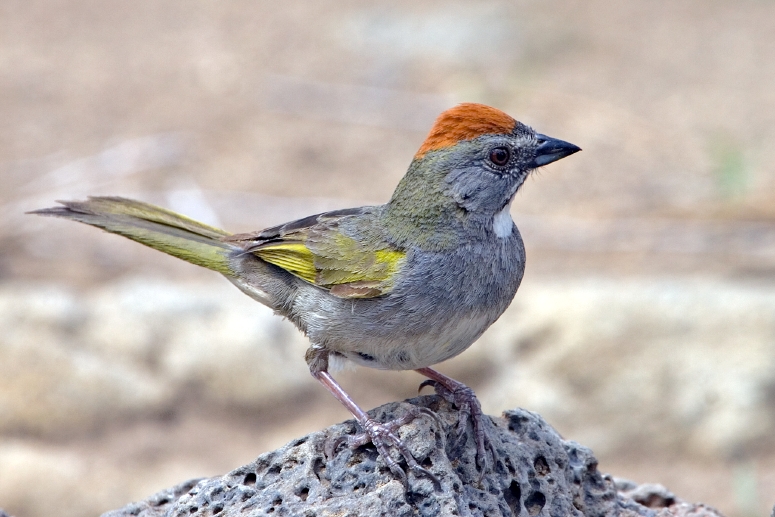 |
| 8.2 | Check Price |
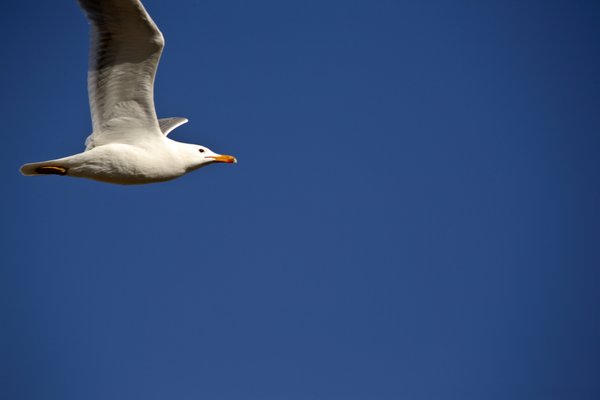 |
| 8 | Check Price |
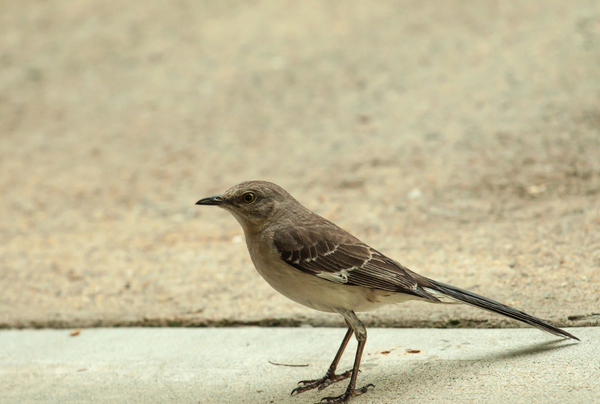 |
| 7.7 | Check Price |
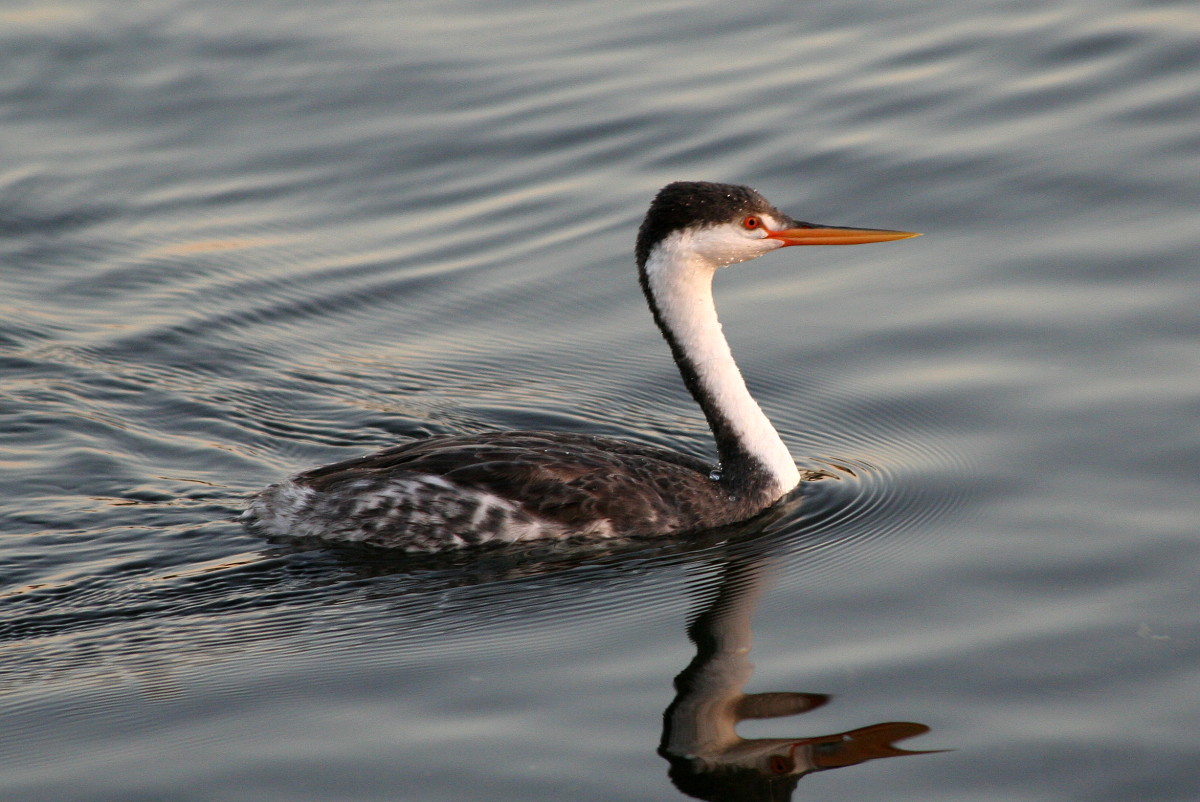 |
| 7.4 | Check Price |
 |
| 7.2 | Check Price |
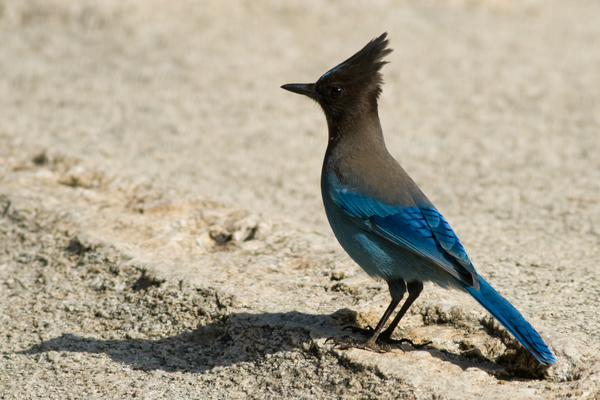 |
| 9.5 | Check Price |
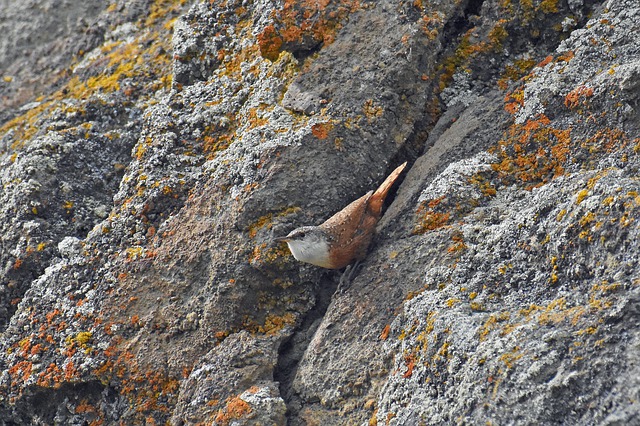 |
| 9.5 | Check Price |
 |
| 9.5 | Check Price |
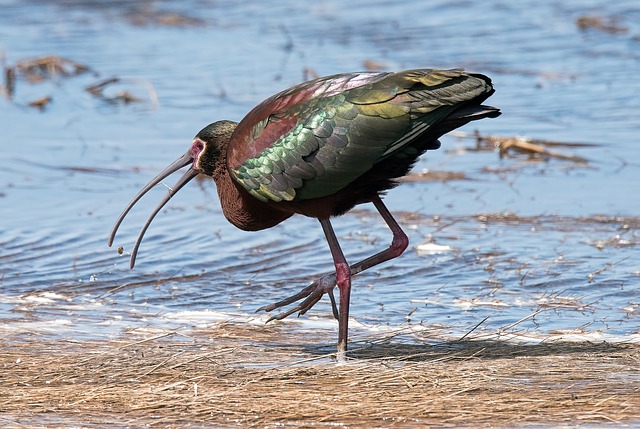 |
| 9.5 | Check Price |
 |
| 9.5 | Check Price |
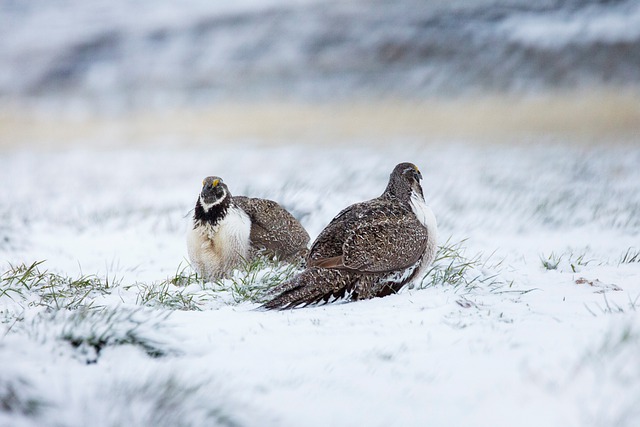 |
| 9.5 | Check Price |
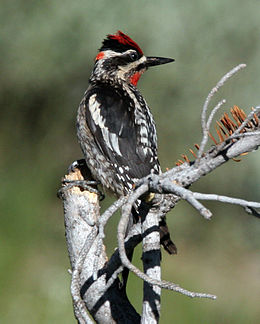 |
| 9.5 | Check Price |
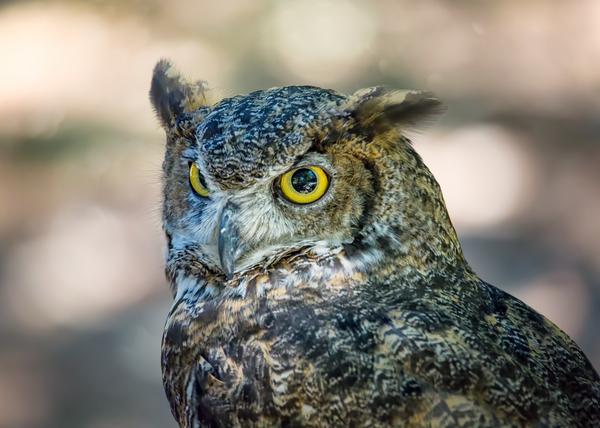 |
| 9.5 | Check Price |
 |
| 9.5 | Check Price |
 |
| 9.5 | Check Price |
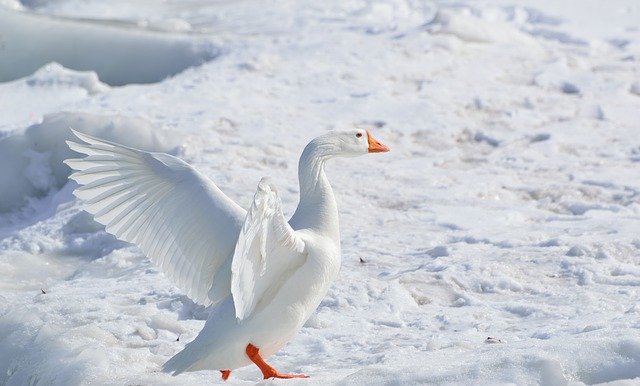 |
| 9.5 | Check Price |
 |
| 9.5 | Check Price |
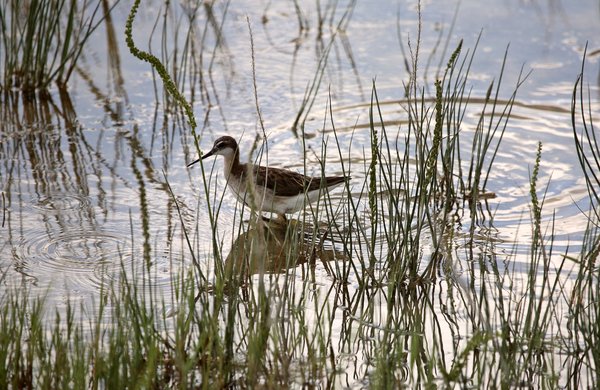 |
| 9.5 | Check Price |
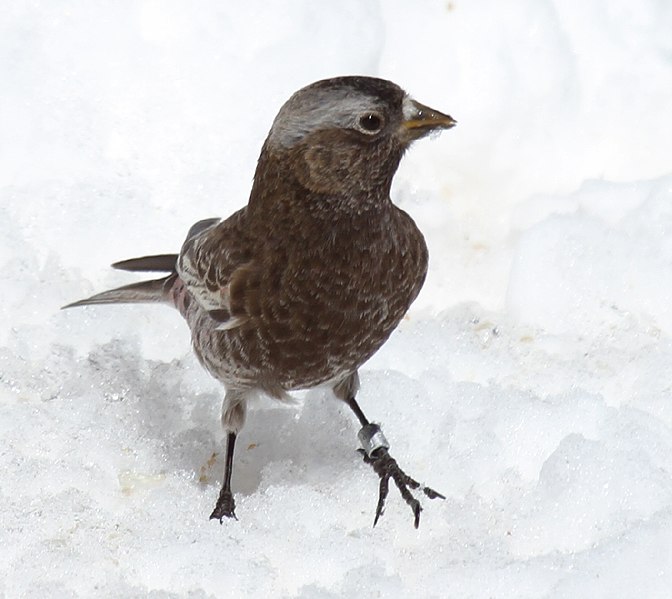 |
| 9.5 | Check Price |
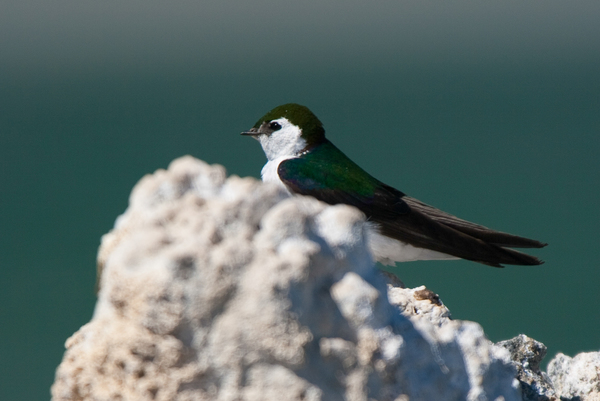 |
| 9.5 | Check Price |
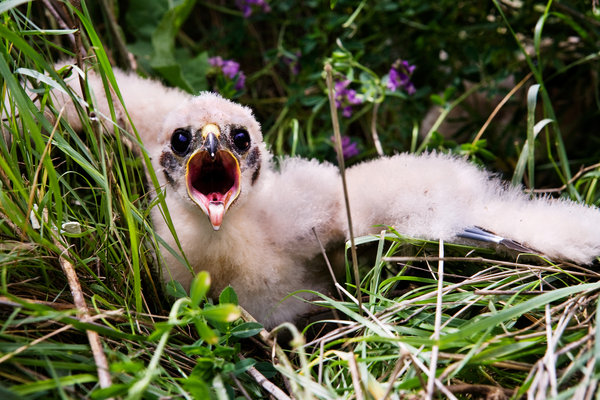 |
| 9.5 | Check Price |
 |
| 9.5 | Check Price |
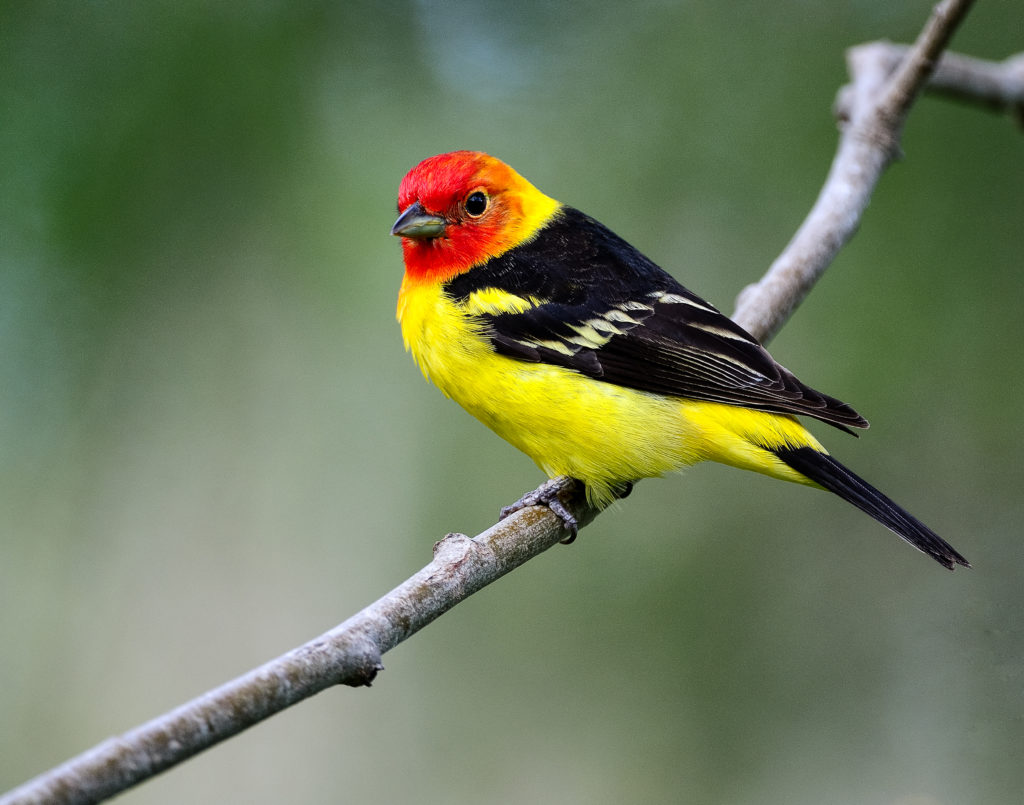 |
| 9.5 | Check Price |
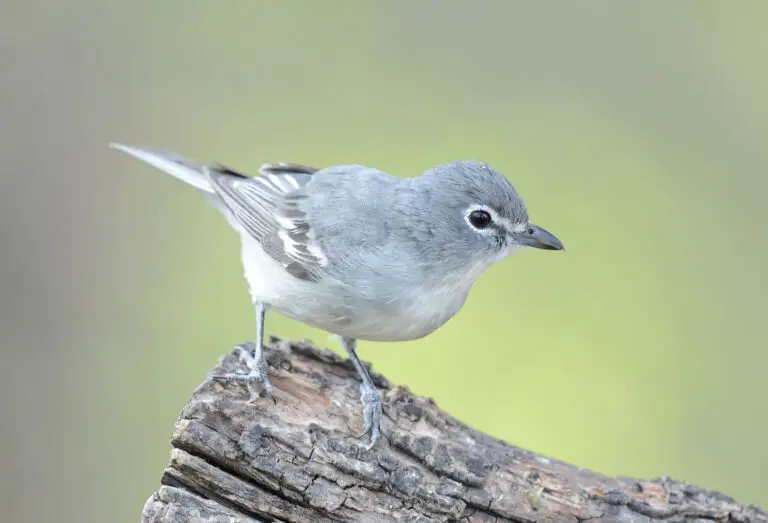 |
| 9.5 | Check Price |
If you don’t have the time to read the whole article, check out this video for a quick understanding.
Most Common Birds in Utah
1. Snowy Plover

Utah’s arid lands and lakeshores provide perfect living circumstances for the Snowy Plover (Charadrius nivosus).
The Snowy Plover is a small shorebird, measuring around 6-7 inches in length.
It has a round head, short bill, and distinctive black “eyebrow” stripes on its forehead.
Its plumage is mostly pale gray or white, with brownish-black patches on its back and wings.
It also has short, dark legs and a stubby tail.
Snowy Plovers measure around 6-7 inches in length. Snowy Plovers typically weigh between 1-2 ounces.
Snowy Plovers have a wingspan of around 14 inches.
This bird’s population has been falling in recent years.
Finding it might be difficult unless you extensively investigate the beach and marsh environs.
Being an important breeding area for the snowy plover, the Great Salt Lake in Utah is a better option to start your search.
This bird is tiny and has a sandy look, allowing it to blend in well.
A breeding adult may be identified by its black markings on the head and neck.
Snowy Plovers primarily feed on small invertebrates such as insects, crustaceans, and mollusks.
They use their short bills to probe into the sand and mud for food.
They also occasionally eat small fish and plant material.
Below are the characteristics of the Snowy Plover,
| Scientific Name | Charadrius nivosus |
| Family Name | Charadriidae |
| Length | 5.5-7.5 inches (14-19 cm) |
| Weight | 0.88-1.94 ounces (25-55 g) |
| Wingspan | 13-16 inches (33-41 cm) |
| Habitat | Sandy beaches, coastal dunes, salt flats, and tidal flats |
| Food | Small invertebrates such as crustaceans, mollusks, insects, and worms |
2. Ferruginous Hawk

The Ferruginous Hawk (Buteo regalis) is a splendid bird of prey with rusty and white plumage that is mostly found in southwestern and northeastern Utah, which are the permanent residents of this bird.
The Ferruginous Hawk is a large, broad-winged hawk, with a distinctive pale, rusty-colored plumage on its head and back.
It has a dark, sharply hooked beak, and its legs are feathered all the way to its toes, which distinguishes it from other hawks.
In flight, its broad wings are held in a shallow “V” shape.
Ferruginous Hawks are one of the largest hawks in North America, with a length of 22-27 inches.
Ferruginous Hawks are also one of the heaviest hawks, weighing between 2-4 pounds.
Ferruginous Hawks have a wingspan of around 4.5-5 feet.
The ferruginous hawk expands across the rest of the state during the summer breeding season.
Prairies, deserts, and different wide grasslands are all home to these formidable raptors.
A ferruginous hawk may be easily identified due to its pale appearance, which shines out whether it is flying or perching.
The unique silhouette can help differentiate it from other hawks.
Ferruginous Hawks primarily feed on small mammals such as rodents, rabbits, and ground squirrels.
They are also known to eat snakes, lizards, and occasionally birds.
Below are the characteristics of the Ferruginous Hawk,
| Scientific Name | Buteo regalis |
| Family Name | Accipitridae |
| Length | 22-27 inches (56-69 cm) |
| Weight | 2.4-5.6 pounds (1.1-2.5 kg) |
| Wingspan | 4.9-5.9 feet (1.5-1.8 m) |
| Habitat | Grasslands, deserts, and shrublands of western North America |
| Food | Small mammals such as ground squirrels, prairie dogs, and rabbits, as well as birds and reptiles |
3. Clark’s Nutcracker

The Clark’s nutcracker (Nucifraga columbiana) is a robust corvid that occasionally visits campsites and can be seen on hilly forest treks.
Clark’s Nutcrackers are medium-sized birds with distinctive black and white plumage.
They have a thick, sturdy bill that they use to crack open seeds and nuts.
Their wings and tail feathers are dark grayish-black, and they have a white patch above the tail.
They also have a white patch on their wings that is visible in flight.
Clark’s Nutcrackers measure around 11-12 inches in length. Clark’s Nutcrackers weigh between 3.5-5.3 ounces.
Clark’s Nutcrackers have a wingspan of around 18-22 inches.
In the summer, this bird prefers higher altitudes, so search for it in the winter when it relocates to lower ranges.
Clark’s nutcrackers have a dagger-like beak and grey plumage with black wings, making them easy to spot.
The white outer tail feathers are a distinguishing feature that may be seen during the bird’s flight.
Clark’s Nutcrackers have a specialized diet that consists primarily of seeds and nuts from pinecones.
Below are the characteristics of Clark’s Nutcracker,
| Scientific Name | Nucifraga columbiana |
| Family Name | Corvidae |
| Length | 11-13 inches (28-33 cm) |
| Weight | 3-5 ounces (85-140 g) |
| Wingspan | 19-21 inches (48-53 cm) |
| Habitat | Coniferous forests and subalpine areas of western North America |
| Food | Seeds of pine, spruce, fir, and other coniferous trees, as well as insects and other small animals |
4. Tundra Swan

The sight of these graceful swans will enchant Utah birders.
This bird loves tundra environments and nests in Arctic areas, as its name indicates.
The Tundra Swan (Cygnus columbianus) nesting site range extends to northern Utah.
Tundra Swans are large, white waterfowl with distinctive black beaks and legs.
They have long, graceful necks and rounded heads.
In flight, their wings make a loud, rhythmic flapping sound.
They can be distinguished from other swans by their smaller size and yellow “tear-drop” spot on their black beaks.
Tundra Swans measure around 4-5 feet in length. Tundra Swans weigh between 10-18 pounds.
Tundra Swans have a wingspan of around 6-7 feet.
Birds move in big flocks and are immediately identified by the distinctive whistling sound made by their wings.
Visually, a tundra swan may be distinguished by its beautiful white plumage and black beak.
A tiny yellow patch can be seen in the beak region of some birds.
Tundra Swans are primarily herbivores, feeding on aquatic plants, grasses, and sedges.
They also eat insects and small invertebrates, particularly during the breeding season when their diet is more varied.
Below are the characteristics of the Tundra Swan,
| Scientific Name | Cygnus columbianus |
| Family Name | Anatidae |
| Length | 4.2-5.5 feet (1.3-1.7 m) |
| Weight | 9.9-23 pounds (4.5-10.4 kg) |
| Wingspan | 5.6-6.6 feet (1.7-2 m) |
| Habitat | Breeds in the Arctic tundra and migrates to winter in coastal wetlands and agricultural fields of North America |
| Food | Aquatic plants, seeds, roots, and tubers, as well as small aquatic animals |
5. Juniper Titmouse

The Juniper Titmouse (Baeolophus ridgwayi) has a fascinating rough chatter that gives some vitality to the favored pinyon-juniper woodland setting, with its basic grey appearance.
The Juniper Titmouse is a small, gray bird with a distinctive crest on its head.
It has a short, stubby bill and a black patch above its beak. Its wings and tail feathers are darker gray than the rest of its body, and it has a pale gray belly.
It can be distinguished from other titmouse species by its habitat preference and distinct vocalizations.
Juniper Titmice measures around 4-5 inches in length. Juniper Titmice weigh between 0.3-0.4 ounces.
Juniper Titmice have a wingspan of around 6-7 inches.
This bird should not be overlooked by birders because it has some impressive habits and behaviors.
It will occasionally hang upside down from branches and execute other acrobatic feats.
Juniper titmice are easy to see because they forage in such a visible manner.
These birds can be found all year in Utah, but it’s best to seek them in late April to increase your chances of locating one.
Juniper Titmice primarily feed on insects, spiders, and other invertebrates.
They also eat seeds, fruits, and nuts during the fall and winter months when insects are less abundant.
Below are the characteristics of the Juniper Titmouse,
| Scientific Name | Baeolophus ridgwayi |
| Family Name | Paridae |
| Length | 4.5-5 inches (11-13 cm) |
| Weight | 0.3-0.4 ounces (9-12 g) |
| Wingspan | 6-7 inches (15-18 cm) |
| Habitat | Arid juniper woodlands of western North America |
| Food | Insects, seeds, and berries |
6. Green-Tailed Towhee

The Green-tailed Towhee (Pipilo chlorurus), named because of its rich olive tail and wing margins, is a common summer visitor in Utah.
The Green-tailed Towhee is a medium-sized bird with a distinctive greenish-yellow tail and reddish-brown back and wings.
It has a black head and a white throat with a black stripe that extends down the center of its chest.
Its bill is short and conical, and its legs are pinkish-brown.
The green-yellow highlights on the bird’s grey body stand out against the scarlet head.
Green-tailed Towhees measure around 7-8 inches in length. Green-tailed Towhees weigh between 1-1.5 ounces.
Green-tailed Towhees have a wingspan of around 9-10 inches.
The shrubby mountainsides and sagebrush flats are the ideal spaces for towhee where these birds spend most of their time.
Since it tends to be found in dense tree cover, spotting it may take some additional work.
Because Green-tailed towhees are shy birds, it’s worth listening for the male’s rising mew cry.
Green-tailed Towhees feed primarily on insects and other invertebrates, particularly during the breeding season.
They also eat seeds and berries, particularly during the fall and winter months.
Below are the characteristics of the Green-Tailed Towhee,
| Scientific Name | Pipilo chlorurus |
| Family Name | Emberizidae |
| Length | 7.5 – 8 inches (19 – 20 cm) |
| Weight | 0.6 – 1 oz (17 – 28 g) |
| Wingspan | 9.4 inches (24 cm) |
| Habitat | Brushy areas, chaparral, and woodland edges in western North America |
| Food | Seeds, insects, and fruit |
7. California Gull

Regardless of the fact that it is named after yet another state, the California Gull (Larus californicus) is the official state bird of Utah.
California Gulls are medium-sized gulls with a white head, neck, and underparts, and a gray mantle and wings.
They have a yellow bill with a red spot on the lower mandible and yellow legs.
During the breeding season, their heads develop a dark hood.
They can be distinguished from other gull species by their smaller size, yellow bill, and unique vocalizations.
California Gulls measure around 20-23 inches in length. California Gulls weigh between 1-2 pounds.
California Gulls have a wingspan of around 4-5 feet.
The year-round distribution of this gull includes sections of the state with lakes and marshes, primarily in the northern regions.
When you’re far away from the colony, you’ll see this bird species with other gulls.
During their journey, California gulls stop in Utah and can be seen in major cities.
Nonbreeding birds have a streaked look, whilst breeding individuals have a white head.
Both species have yellow legs and bills with a red tinge.
California Gulls are opportunistic feeders and will eat a variety of prey, including fish, insects, crustaceans, and small mammals.
They also scavenge for food in garbage dumps and on fishing boats.
Below are the characteristics of the California Gull,
| Scientific Name | Larus californicus |
| Family Name | Laridae |
| Length | 21 – 24 inches (53 – 61 cm) |
| Weight | 23 – 30 oz (650 – 850 g) |
| Wingspan | 4.5 – 5.5 feet (1.4 – 1.7 m) |
| Habitat | Wetlands, lakes, and coastal areas in western North America |
| Food | Fish, insects, crustaceans, and carrion |
8. Sage Thrasher

A summer journey to Utah provides birders with a fantastic opportunity to see a wide variety of intriguing species.
A Sage Thrasher (Oreoscoptes montanus) might be spotted while exploring sagebrush step habitats.
This thrasher is much smaller than other thrasher species.
Sage Thrashers are medium-sized songbirds with a long, slightly curved bill and a long, rounded tail.
They are grayish-brown with darker streaks on their back and wings and a white belly.
They have a distinctive white eye-ring and a faint white stripe above their eye.
They are often difficult to see in their sagebrush habitat as they blend in well with the surrounding vegetation.
It has a mockingbird-like appearance, however, there are a few notable differences.
Sage Thrashers measure around 7-8 inches in length. Sage Thrashers weigh between 0.7-1.1 ounces.
Sage Thrashers have a wingspan of around 13-14 inches.
The sage thrasher is distinguished by its browner plumage and different markings on its body.
Males are quite industrious when it comes to singing, and their call notes are remarkably similar to those of red-winged blackbirds.
Sage Thrashers feed primarily on insects and other invertebrates, particularly during the breeding season.
Below are the characteristics of the Sage Thrasher,
| Scientific Name | Oreoscoptes montanus |
| Family Name | Mimidae |
| Length | 7.5 – 8 inches (19 – 20 cm) |
| Weight | 0.8 – 1.1 oz (23 – 31 g) |
| Wingspan | 12 – 14 inches (30 – 36 cm) |
| Habitat | Sagebrush and arid habitats in western North America |
| Food | Insects, spiders, and berries |
9. Clark’s Grebe

The Clark’s Grebe (Aechmophorus clarkii) is a rare bird that lives in freshwater marshes and has beautiful black-and-white plumage.
Clark’s Grebes are large, elegant waterbirds with long necks, long, pointed bills, and red eyes.
They have black and white plumage, with a distinctive black cap and a white cheek.
They have long, lobed toes on their feet, which enable them to swim and dive efficiently.
Clark’s Grebes measure around 20-29 inches in length. Clark’s Grebes weigh between 2-4 pounds.
Clark’s Grebes have a wingspan of around 3-4 feet.
This species is only seen in Utah during the summer when it migrates to marshy lakes to nest.
For every birder, Clark’s grebe is a pleasant experience.
Some of the most recognizable features include the black crown, sinuous neck, and bright orange bill.
This bird’s elaborate courtship show, which is reminiscent of ballet performances, is one of the reasons it is so sought after.
Clark’s Grebes feed primarily on small fish, such as perch and minnows, but also eat insects and crustaceans.
They forage by swimming underwater and using their lobed toes to propel themselves through the water.
They can remain submerged for up to 30 seconds while hunting for prey.
Below are the characteristics of the Clark’s Grebe,
| Scientific Name | Aechmophorus clarkii |
| Family Name | Podicipedidae |
| Length | 20 – 29 inches (51 – 74 cm) |
| Weight | 30 – 70 oz (850 – 2000 g) |
| Wingspan | 4 – 5 feet (1.2 – 1.5 m) |
| Habitat | Large freshwater lakes and reservoirs in western North America |
| Food | Fish, crustaceans, and aquatic insects |
10. Virginia Rail

Another bird that can be found in Utah’s wetlands is this one.
The Virginia Rail (Rallus limicola) mixes well within lush vegetation, but its location can be determined by listening to characteristic booming sounds.
Virginia Rails are small, secretive birds with long, thin bills and short tails.
They have dark brown and black plumage with a reddish-brown breasts and a gray face.
They have a distinctive white patch on their under-tail coverts, which is often visible when they are in flight.
It can be identified by its chicken-like profile and the way it walks with its tail cocked.
Virginia Rails measure around 9-11 inches in length. Virginia Rails weigh between 1.5-3 ounces.
Virginia Rails have a wingspan of around 14-16 inches.
In the summer, Virginia rails are rather common in Utah, but their impenetrable habitat and secretive nature make it difficult for birders to locate them.
Virginia Rails feed on a variety of invertebrates, including insects, snails, and crustaceans, which they find by probing the mud with their long bill.
They also eat seeds and small fish, particularly during the winter months when other food sources are scarce.
Below are the characteristics of the Virginia Rail,
| Scientific Name | Rallus limicola |
| Family Name | Rallidae |
| Length | 8.7 – 10.6 inches (22 – 27 cm) |
| Weight | 1.4 – 3.5 oz (40 – 100 g) |
| Wingspan | 14.2 – 16.5 inches (36 – 42 cm) |
| Habitat | Freshwater and saltwater marshes in North America |
| Food | Aquatic invertebrates, small fish, and seeds |
11. Steller’s Jay

Steller’s Jays (Cyanocitta stelleri) are so common in Utah, you may readily admire their bright plumage and sassy crest.
Steller’s Jays are medium-sized birds with distinctive crests on their head.
They have a black head, neck, and upper body, with a dark blue lower body and wings.
They have a long, pointed bill and a short tail.
The feathers on their crest are often held upright, giving them a distinctive appearance.
Steller’s Jays measure around 11-12 inches in length. Steller’s Jays weigh between 2-3 ounces.
Steller’s Jays have a wingspan of around 16-18 inches.
The Steller’s Jay is mainly found in evergreen forests in hilly places, but it can also be found in human-populated areas such as backyards or campgrounds.
These birds like to spend the majority of their time on treetops.
To detect the jay more successfully in dense trees, it is advised to listen for its sharp sounds.
Steller’s jays feature beautiful flight patterns and a blue lower body that contrasts with a dark charcoal crest, making them visually stand out.
Steller’s Jays are omnivores, feeding on a variety of insects, fruits, nuts, and seeds.
Below are the characteristics of the Steller’s Jay,
| Scientific Name | Cyanocitta stelleri |
| Family Name | Corvidae |
| Length | 11 – 12 inches (28 – 30 cm) |
| Weight | 2.5 – 3.5 oz (70 – 100 g) |
| Wingspan | 14 – 17 inches (36 – 43 cm) |
| Habitat | Coniferous and mixed woodlands in western North America |
| Food | Insects, nuts, seeds, and small vertebrates |
12. Canyon Wren

Even with its diminutive stature, the small Canyon Wren (Catherpes mexicanus) sings sweetly and powerfully, with a variety of whistle-like noises.
Canyon Wrens are small, brown birds with a distinctive white stripe above their eye and a long, curved bill.
They have short tails that they often hold upright, and their wings are barred with black and white.
They have a rich, musical song that is often heard echoing through the canyons where they live.
Canyon Wrens measure around 5-6 inches in length. Canyon Wrens weigh between 0.3-0.4 ounces.
Canyon Wrens have a wingspan of around 7-8 inches.
This bird prefers rocky habitats and other dry regions.
Canyon wrens are quick-moving birds that are continually on the lookout for insects in cracks or on the ground.
The rusty brown overall plumage of this wren distinguishes it visually. The stocky-chested bird has made Utah its a permanent home.
Canyon Wrens are insectivores, feeding on a variety of insects and spiders.
Below are the characteristics of the Canyon Wren,
| Scientific Name | Catherpes mexicanus |
| Family Name | Troglodytidae |
| Length | 4.5 – 5 inches (11 – 13 cm) |
| Weight | 0.3 – 0.5 oz (8 – 14 g) |
| Wingspan | 7 – 9 inches (18 – 23 cm) |
| Habitat | Rocky canyons and cliffs in western North America |
| Food | Insects and spiders |
13. Gambel’s Quail

If you want to see the Gambel’s Quail (Callipepla gambelii), you should go to Utah’s shrubby or thorny habitats.
Gambel’s Quails are plump, ground-dwelling birds with a distinctive, forward-curling feather on their head called a plume.
They have a brownish-gray body with white and black markings, and a brown crest on their head.
Males have a black patch on their bellies, while females have a more muted, buff-colored belly.
Males and females both have a plump appearance with a swirling black knot of feathers, but the male bird’s cinnamon-brown crown shines more which makes it more prominent.
This bird is adapted to the state’s desert regions in the south.
It’s easy to mix it up with California quail, but the Gambel’s variety has a black belly patch that helps distinguish it.
Gambel’s Quails measure around 10-12 inches in length. Gambel’s Quails weigh between 5-8 ounces.
Gambel’s Quails have a wingspan of around 14-16 inches.
Gambel’s Quails are omnivores, feeding on a variety of seeds, fruits, and insects.
This ground-feeding game bird forages for food.
Below are the characteristics of the Gambel’s Quail,
| Scientific Name | Callipepla gambelii |
| Family Name | Odontophoridae |
| Length | 11 – 12 inches (28 – 30 cm) |
| Weight | 5.3 – 7.8 oz (150 – 220 g) |
| Wingspan | 14 – 16 inches (36 – 41 cm) |
| Habitat | Desert scrub and arid grasslands in the southwestern United States and Mexico |
| Food | Seeds, fruits, insects, and small vertebrates |
14. White-Faced Ibis

The White-faced Ibis (Plegadis chihi) is definitely a spectacular sight, with its exquisite dark red plumage and shiny green wings.
The White-Faced Ibis is a medium-sized wading bird with dark, iridescent feathers and a distinctive white face.
The bill is long and curved, and the legs are long and slender.
During the breeding season, adults have red eyes and reddish-brown plumage on their necks and back.
White-Faced Ibises measure around 22-27 inches in length. White-Faced Ibises weigh between 1-1.5 pounds.
White-Faced Ibises have a wingspan of around 36-41 inches.
The state of Utah contains a significant population of these shorebirds.
It’s most likely to be found near the Great Salt Lake.
The white-faced ibis can be found in a variety of marshy areas in northern Utah.
The bird is frequently confused with the glossy ibis, which has a similar appearance except for the absence of a white line around the eyes.
White-Faced Ibises are omnivores, feeding on a variety of invertebrates, small fish, and amphibians.
Below are the characteristics of the White-Faced Ibis,
| Scientific Name | Plegadis chihi |
| Family Name | Threskiornithidae |
| Length | 21 – 27 inches (54 – 68 cm) |
| Weight | 14 – 28 oz (400 – 800 g) |
| Wingspan | 36 – 41 inches (91 – 104 cm) |
| Habitat | Wetlands, marshes, and flooded fields in western North America |
| Food | Aquatic invertebrates, small fish, and amphibians |
15. Golden Eagle

The Golden Eagle (Aquila chrysaetos) is a must-see for birders looking for stunning raptors in Utah.
Many regions of Utah are home to this magnificent bird.
The Golden Eagle is a large bird of prey with dark brown plumage and a distinctive golden color on the back of its head and neck.
It has a large, hooked beak and powerful talons for catching and holding prey.
Juvenile birds have darker plumage and lack the golden color on their head and neck.
Golden Eagles measure around 30-40 inches in length.
Golden Eagles weigh between 6-15 pounds, with females being larger than males.
Golden Eagles have a wingspan of around 6-7 feet.
With gleaming feathers, graceful profiles, and powerful talons and beaks for hunting mammal prey, these birds are all worthy of admiration.
Despite their extensive distribution in the western United States, golden eagles are solitary birds that are difficult to spot.
Because the bird prefers big, open areas that are typically more remote, this is the case.
To watch soaring golden eagles in all their grandeur, invest in a good set of binoculars.
Golden Eagles are opportunistic hunters and feed on a variety of prey including small mammals like rabbits and ground squirrels, birds, reptiles, and sometimes carrion.
Below are the characteristics of the Golden Eagle,
| Scientific Name | Aquila chrysaetos |
| Family Name | Accipitridae |
| Length | 26 – 40 inches (66 – 102 cm) |
| Weight | 5.5 – 15 lbs (2.5 – 6.8 kg) |
| Wingspan | 6 – 7.5 feet (1.8 – 2.3 m) |
| Habitat | Open and semi-open habitats, including mountains, tundra, and deserts, across the Northern Hemisphere |
| Food | Mammals, birds, reptiles, and carrion |
16. Greater Sage-Grouse

Birders visiting Utah believe that the Greater Sage Grouse (Centrocercus urophasianus) is a magnificent sight.
The Greater Sage-Grouse is a large, ground-dwelling bird with a plump body, short tail, and feathered legs.
Males are larger than females and have distinctive white breasts with a black throat patch, yellow eye combs, and long, pointed tail feathers.
Females are mottled brown and lack the male’s flashy plumage.
Greater Sage-Grouse measures around 25-30 inches in length.
Greater Sage-Grouse weighs between 2-7 pounds, with males being larger than females.
Greater Sage-Grouse has a wingspan of around 2-3 feet.
When males fan their pointed tails and inflate bulbous air sacs during the mating season, it gives a tremendous sight.
The only suitable dwelling habitat for this game bird is the sagebrush plains of the western United States.
It’s difficult to see the greater sage-grouse’s display unless you go to a lake that’s open to the public.
Adult birds resemble speckled pudgy grouses outside of the breeding season.
Males have white breasts and a yellow eyebrow patch, which makes them stand out.
Greater Sage-Grouse are herbivores and feed on sagebrush leaves, buds, and flowers, as well as other plants and insects.
Below are the characteristics of the Greater Sage-Grouse,
| Scientific Name | Centrocercus urophasianus |
| Family Name | Phasianidae |
| Length | 25 – 30 inches (63 – 76 cm) |
| Weight | 4 – 7 lbs (1.8 – 3.2 kg) |
| Wingspan | 46 – 60 inches (117 – 152 cm) |
| Habitat | Sagebrush steppe and grasslands of western North America |
| Food | Sagebrush leaves, buds, and flowers; insects in the summer |
17. Red-Napped Sapsucker

Red-napped Sapsuckers (Sphyrapicus nuchalis) are diligent bark foragers who are frequently heard before being seen.
The Red-Napped Sapsucker is a medium-sized woodpecker with a black and white striped head, yellow belly, and red nape.
Males have a red throat patch, while females have a white throat.
They have a distinctive behavior of drilling neat rows of small holes in tree bark, which they then feed on sap and insects that get caught in the sap.
Red-Napped Sapsuckers measure around 8-9 inches in length. Red-Napped Sapsuckers weigh between 1-2 ounces.
Red-Napped Sapsuckers have a wingspan of around 14 inches.
The bird’s piercing cry and typical stuttering drumming sounds are associated with its search for sweet sap.
In the early stages of its breeding season, this woodpecker is quite busy.
If you visit Utah during the summer, it is a fantastic area to watch them.
You may look for red-napped sapsuckers in aspen and pine forests. Keep an eye out for sap wells, which may signal the presence of a woodpecker.
The vivid red patch on the skull distinguishes it from other sapsucker species.
Red-Napped Sapsuckers are primarily insectivorous, but they also feed on tree sap and fruits.
Below are the characteristics of the Red-Napped Sapsucker,
| Scientific Name | Sphyrapicus nuchalis |
| Family Name | Picidae |
| Length | 7 – 8 inches (18 – 20 cm) |
| Weight | 1 – 1.5 oz (28 – 43 g) |
| Wingspan | 13 – 15 inches (33 – 38 cm) |
| Habitat | Forested habitats, including mixed coniferous and deciduous forests, in western North America |
| Food | Tree sap, insects, and fruit |
18. Northern Pygmy-Owl

Utah is home to a variety of unique owl species, but none are more difficult to spot than the Northern Pygmy Owl (Glaucidium californicum).
These birds may be active during the day, so it’s obvious to see them.
The Northern Pygmy-Owl is a small owl with a rounded head and no ear tufts.
It has yellow eyes and a white “eyebrow” mark above the eyes.
Its body is brownish-gray with white spots on the head and upper body.
It has a long tail and short wings.
The Northern Pygmy-Owl measures 6.5-7.5 inches (16.5-19 cm) in length.
The Northern Pygmy-Owl weighs 2.1-2.5 ounces (60-70 g).
The wingspan of the Northern Pygmy-Owl is 14-16 inches (35-41 cm).
The Northern Pygmy-Owl primarily feeds on small birds and rodents but also eats insects and other small animals.
It prefers to live in hilly woodlands, where it waits patiently for prey to appear.
The smoothly rounded heads and long tails of a northern pygmy owl are some of its distinguishing features.
It spends the entire year in Utah and can be found by listening for its high-pitched toots.
Below are the characteristics of the Northern Pygmy-Owl,
| Scientific Name | Glaucidium californicum |
| Family Name | Strigidae |
| Length | 15-17 cm (6-7 in) |
| Weight | 55-70 g (1.9-2.5 oz) |
| Wingspan | 28-33 cm (11-13 in) |
| Habitat | Forests, woodlands, and mountainous areas |
| Food | Mainly small mammals, birds, and insects |
19. American Dipper

As a birder, it’s a good idea to venture near rivers and streams in Utah.
Various species, such as the American Dipper (Cinclus mexicanus), may be visible.
It is an aquatic songbird, so this bulky bird can be considered unusual on the continent.
All year, American dippers can be seen in Utah, where they forage for food in the water.
The American Dipper is a small, stocky bird with a short tail and short wings.
It has a dark, slate-gray body and a white breasts.
It has a round head with a short, straight bill.
Its legs are short and sturdy.
It has a unique behavior of bobbing up and down while standing on rocks in fast-moving streams.
The bird isn’t particularly colorful, but it’s worth looking for if you want to watch its frantic foraging habits.
The American Dipper measures about 7.5-8 inches (19-20 cm) in length. The American Dipper weighs about 1.6-2.0 ounces (45-56 g).
The wingspan of the American Dipper is about 11-12 inches (28-30 cm).
The American Dipper primarily feeds on aquatic insects, such as mayflies and caddisflies, as well as small fish and crustaceans.
Below are the characteristics of the American Dipper,
| Scientific Name | Cinclus mexicanus |
| Family Name | Cinclidae |
| Length | 16-20 cm (6.3-7.9 in) |
| Weight | 42-62 g (1.5-2.2 oz) |
| Wingspan | 28-32 cm (11-13 in) |
| Habitat | Mountainous areas near fast-flowing streams and rivers |
| Food | Aquatic insects, small fish, and other aquatic invertebrates |
20. Chukar

The Chukar (Alectoris chukar), a fascinating bird to observe in Utah, has adapted admirably to the stony canyons and scrub deserts of the western United States.
It’s an Asian native bird that’s been successfully introduced and is now a year-round inhabitant in dry terrain.
The Chukar is a medium-sized game bird with a plump body and a short tail.
It has a brownish-gray back, a white belly, and a black band around its neck.
It has a distinctive red bill and legs.
Its head is gray with a black band above its eyes.
Chukars are easily identifiable due to these traits.
The Chukar measures about 13-14 inches (33-36 cm) in length. The Chukar weighs about 1-1.5 pounds (450-680 g).
The wingspan of the Chukar is about 17-19 inches (43-48 cm).
Keep in mind that this is a wary bird, so getting a good look from a short distance may be difficult.
The Chukar feeds on a variety of seeds, berries, and insects.
Its diet varies depending on the season and the availability of food.
Below are the characteristics of the Chukar,
| Scientific Name | Alectoris chukar |
| Family Name | Phasianidae |
| Length | 35-40 cm (14-16 in) |
| Weight | 700-800 g (1.5-1.8 lb) |
| Wingspan | 54-64 cm (21-25 in) |
| Habitat | Rocky hillsides and scrubland |
| Food | Seeds, leaves, insects, and small invertebrates |
21. Snow Goose

Snow Goose (Anser caerulescens) may be seen across North America in considerably large numbers.
The Snow Goose is a medium to large-sized goose with a white body and black wingtips.
Its bill, legs, and feet are pink. It has a distinctive black “grinning patch” on its bill.
The Snow Goose has two color morphs: a white morph and a blue morph.
The blue morph has a bluish-gray body with a white head and neck.
During the winter migration season, vast groups of these loud birds can be found in Utah.
The only white feathers on the heads of adult blue morph snow geese are on their heads.
The Snow Goose measures about 25-32 inches (64-81 cm) in length. The Snow Goose weighs about 3-7 pounds (1.4-3.2 kg).
The wingspan of the Snow Goose is about 4-5.5 feet (1.2-1.7 m).
The Snow Goose feeds on a variety of vegetation, including grasses, sedges, and aquatic plants.
Below are the characteristics of the Snow Goose,
| Scientific Name | Anser caerulescens |
| Family Name | Anatidae |
| Length | 64-81 cm (25-32 in) |
| Weight | 2.3-3.6 kg (5-8 lb) |
| Wingspan | 135-175 cm (53-69 in) |
| Habitat | Arctic tundra, wetlands, and agricultural fields |
| Food | Grasses, sedges, and other vegetation |
22. Mountains Bluebird

In the summer, the Mountain Bluebird (Sialia currucoides), with its gleaming cerulean look, offers a splash of color to Utah’s alpine meadows.
The Mountain Bluebird is a small, stocky bird with a short tail and a plump body.
The male has bright blue upper parts and rusty-brown breasts.
The female has more muted blue-gray upper parts and a pale gray breast.
Both sexes have a small, thin bill.
The Mountain Bluebird measures about 6-8 inches (16-20 cm) in length.
The Mountain Bluebird weighs about 1-1.5 ounces (28-42 g).
The wingspan of the Mountain Bluebird is about 12-16 inches (30-41 cm).
Finding a mountain bluebird is a simple undertaking if you’re seeking the correct open woodland environment.
This is due to the fact that these birds are not afraid of humans and prefer to sit in many visible locations.
Residents of Utah should think about getting a nest box. Mountain bluebirds are reported to make frequent use of them.
The Mountain Bluebird feeds on a variety of insects, including grasshoppers, beetles, and caterpillars.
It also eats berries and fruit during the winter months.
Below are the characteristics of the Mountains Bluebird,
| Scientific Name | Sialia currucoides |
| Family Name | Turdidae |
| Length | 16-20 cm (6.3-7.9 in) |
| Weight | 27-34 g (0.95-1.2 oz) |
| Wingspan | 32-39 cm (12.6-15.4 in) |
| Habitat | Open grasslands and meadows in mountainous regions |
| Food | Insects, spiders, and other small invertebrates |
23. Wilson’s Phalarope

This is a lovely shorebird that may be seen in Utah.
When it comes to breeding sites, Wilson’s Phalarope (Phalaropus tricolor) prefers salty lakes.
Large flocks of birds gather on marshes and shallow wetlands in the northern parts of the state during the summer.
The Wilson’s Phalarope is a medium-sized shorebird with a thin, straight bill and a long neck.
During the breeding season, the female has a bright rust-colored neck and upper breast, while the male has a duller grayish-brown neck and upper breast.
Both sexes have a white belly and black wings with a white stripe.
During the non-breeding season, both sexes have a drab grayish-brown plumage.
Wilson’s Phalarope measures about 7 to 9 inches (18 to 23 cm) in length. Wilson’s Phalarope weighs between 1.5 to 2.6 ounces (42 to 73 grams).
Wilson’s Phalarope has a wingspan of approximately 16 to 18 inches (40 to 46 cm).
Wilson’s Phalarope feeds on small aquatic invertebrates such as insects, crustaceans, and mollusks.
Below are the characteristics of Wilson’s Phalarope,
| Scientific Name | Phalaropus tricolor |
| Family Name | Scolopacidae |
| Length | 19-23 cm (7.5-9 in) |
| Weight | 40-65 g (1.4-2.3 oz) |
| Wingspan | 41-46 cm (16-18 in) |
| Habitat | Wetlands, mudflats, and shallow ponds in grasslands |
| Food | Aquatic insects, crustaceans, and small fish |
24. Black Rosy-Finch

Many birders flock to Utah to see the bright Black Rosy Finch (Leucosticte atrata), which was discovered in the state’s northern mountains.
The Black Rosy-Finch is a small bird, about 6 to 7 inches (15 to 18 cm) in length.
It has a dark black plumage with a slight rosy or pink tint on its wings and tail.
The male and female look similar, but the male may have brighter pink markings during the breeding season.
The Black Rosy-Finch weighs between 0.9 to 1.1 ounces (25 to 31 grams).
The Black Rosy-Finch has a wingspan of approximately 9 to 10 inches (23 to 25 cm).
During the breeding season, the yellow bill turns black, and the brown plumage of the bird darkens.
It nests in inaccessible rocks and crevices, so you’re unlikely to see this bird during its mating season.
The ideal time to look for the black rosy finch is during the winter when it migrates to lower elevations.
The Black Rosy-Finch primarily feeds on seeds and insects, which they forage for on the ground or in low vegetation.
Below are the characteristics of the Black Rosy-Finch,
| Scientific Name | Leucosticte atrata |
| Family Name | Fringillidae |
| Length | 16-19 cm (6.3-7.5 in) |
| Weight | 30-38 g (1.1-1.3 oz) |
| Wingspan | 28-31 cm (11-12 in) |
| Habitat | High-elevation alpine areas with rocky cliffs and talus slopes |
| Food | Seeds, insects, and other small invertebrates |
25. Violet-Green Swallow

Violet-green Swallows (Tachycineta thalassina) can be found in abundance in Utah’s mountain gullies.
The appearance of these birds is a blend of violet and green, which assists in visual identification.
The Violet-Green Swallow is a small bird, about 4.5 to 5.5 inches (11 to 14 cm) in length.
It has a distinctive violet-green plumage, with iridescent green wings and a white belly.
The male and female look similar, but the male may have slightly longer outer tail feathers.
The Violet-Green Swallow weighs between 0.4 to 0.5 ounces (11 to 14 grams).
The Violet-Green Swallow has a wingspan of approximately 10 inches (25 cm).
Summer is the greatest time to see the violet-green swallow, an airborne insectivore.
Mexico and Central America have winters.
To search for this bird you must visit near rivers or lakes, as well as any other place where there are a lot of flying insects.
You’ll be rewarded with a variety of acrobatic tricks from the swallow.
The Violet-Green Swallow feeds on insects, primarily flying insects such as flies, mosquitoes, and beetles.
Below are the characteristics of the Violet-Green Swallow,
| Scientific Name | Tachycineta thalassina |
| Family Name | Hirundinidae |
| Length | 12-14 cm (4.7-5.5 in) |
| Weight | 11-18 g (0.4-0.6 oz) |
| Wingspan | 25-30 cm (9.8-11.8 in) |
| Habitat | Open woodlands, riparian areas, and suburban habitats |
| Food | Flying insects, such as flies, mosquitoes, and ants |
26. Prairie Falcon

If you want to witness some of the West’s most powerful raptors, a trip to Utah is a good idea.
Prairie Falcons (Falco mexicanus) can be seen in this state, gliding above vast grasslands in search of prey.
The bird is a permanent inhabitant of Utah, where it can be found in open areas with little trees.
The Prairie Falcon is a medium-sized bird of prey, measuring about 15 to 20 inches (38 to 51 cm) in length.
The Prairie Falcon weighs between 1 to 2 pounds (0.45 to 0.91 kg).
It has a wingspan of about 35 to 43 inches (89 to 109 cm).
Its plumage is a mottled brown color on its upper parts and white with dark streaks on its underparts.
The Prairie Falcon has distinctive sideburns of dark feathers that extend down from the sides of its head to its neck.
It’s otherwise indistinguishable from other falcons with similar appearances.
Prairie falcons don’t stay perched for long periods of time, so you’ll most likely encounter them flying near the ground.
The Prairie Falcon primarily feeds on other birds, including small songbirds, shorebirds, and waterfowl.
They also eat small mammals, such as ground squirrels, rabbits, and rodents.
Below are the characteristics of the Prairie Falcon,
| Scientific Name | Falco mexicanus |
| Family Name | Falconidae |
| Length | 38-46 cm (15-18 in) |
| Weight | 540-1,000 g (1.2-2.2 lb) |
| Wingspan | 91-112 cm (36-44 in) |
| Habitat | Grasslands, shrublands, and desert regions |
| Food | Small mammals, birds, reptiles, and insects |
27. Broad-Tailed Hummingbird

The Broad-tailed Hummingbird (Selasphorus platycercus) has a rose-magenta throat that makes it an eye-catching presence everywhere during the summer months.
The Broad-tailed Hummingbird is a small bird, measuring about 3.5 to 4 inches (9 to 10 cm) in length.
It has a bright metallic green back and crown, and a white breast and belly.
The male has a distinctive red throat patch, or “gorget,” which can be flared out during courtship displays.
Both males and females have a distinctive “whirring” sound created by their rapid wing beats.
The Broad-tailed Hummingbird measures about 3.5 to 4 inches (9 to 10 cm) in length.
The Broad-tailed Hummingbird weighs between 0.1 to 0.2 ounces (3 to 5 grams).
The Broad-tailed Hummingbird has a wingspan of approximately 4 to 5 inches (10 to 13 cm).
This hummingbird prefers high alpine meadows to breed in.
It can be difficult to identify in its natural habitat, but the metallic trills can help you pinpoint its specific location.
Broad-tailed hummingbirds are frequent feeders throughout its territory.
An adult male bird doing dives to attract a female can be a stunning sight.
Without the binoculars, you can generally follow this hummingbird more closely.
The Broad-tailed Hummingbird feeds primarily on nectar from flowers but also eats insects and spiders for protein.
Below are the characteristics of the Broad-Tailed Hummingbird,
| Scientific Name | Selasphorus platycercus |
| Family Name | Trochilidae |
| Length | 9-10 cm (3.5-4 in) |
| Weight | 3-6 g (0.1-0.2 oz) |
| Wingspan | 11-13 cm (4.3-5.1 in) |
| Habitat | Montane meadows, open woodlands, and shrublands |
| Food | Nectar from flowers, insects, and spiders |
28. Western Tanager

The Western Tanager (Piranga ludoviciana), which has a flame-like appearance, is a typical sight in Utah’s coniferous woods during the summer.
The Western Tanager is a medium-sized bird, measuring about 6.5 to 7.5 inches (16 to 19 cm) in length.
The male has bright red plumage on its head, neck, and upper body, with a yellow-green back and black wings.
The female has a duller yellow-green body with gray wings and a yellow head.
Both sexes have black tails with white patches at the tips.
The Western Tanager measures about 6.5 to 7.5 inches (16 to 19 cm) in length. The Western Tanager weighs between 0.6 to 0.7 ounces (17 to 20 grams).
The Western Tanager has a wingspan of approximately 9 to 10 inches (23 to 25 cm).
The bird enjoys open forests, but it does not sit in highly visible areas.
It will almost always take more effort to locate it than a simple visual search.
The tanager spends so much time in the deep canopy, so it’s best to listen for its brief, burry song and distinctive call notes to make a definite identification.
Remember that only males have a unique redhead, whereas females have a slightly deeper yellow appearance.
The Western Tanager feeds primarily on insects, including beetles, caterpillars, and flies.
They also eat fruit and nectar and are important pollinators for many plant species.
Below are the characteristics of the Western Tanager,
| Scientific Name | Piranga ludoviciana |
| Family Name | Cardinalidae |
| Length | 16-18 cm (6.3-7.1 in) |
| Weight | 23-34 g (0.8-1.2 oz) |
| Wingspan | 27-30 cm (10.6-11.8 in) |
| Habitat | Coniferous forests and mixed woodlands |
| Food | Insects, berries, and fruit |
29. Plumbeous Vireo
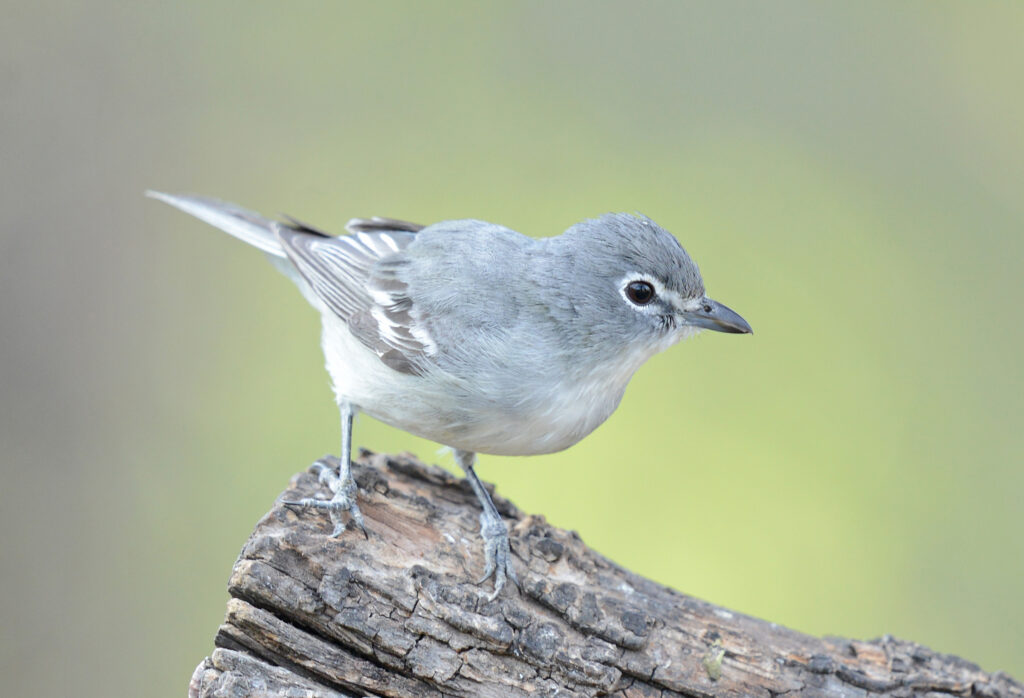
In Utah, the Plumbeous Vireo is a summer visitor.
It’s a gray-colored bird with a lovely song.
A Plumbeous Vireo (Vireo plumbeus) is easily spotted in dry pine woodlands.
The Plumbeous Vireo is a small, insect-eating bird with grayish-blue plumage on its back and wings and a whitish underbelly.
It has a white eyebrow stripe above its eye and a dark line through its eye.
It also has a thick, hooked bill.
The Plumbeous Vireo is approximately 11.5 to 13 centimeters (4.5 to 5 inches) in length.
The Plumbeous Vireo weighs approximately 10 to 12 grams (0.35 to 0.42 ounces).
The Plumbeous Vireo has a wingspan of approximately 18 to 20 centimeters (7 to 8 inches).
The Plumbeous Vireo feeds primarily on insects, spiders, and other arthropods, which it catches by foraging through vegetation.
It also eats some berries and seeds.
Below are the characteristics of the Plumbeous Vireo,
| Scientific Name | Vireo plumbeus |
| Family Name | Vireonidae |
| Length | 11-13 cm (4.3-5.1 in) |
| Weight | 8-12 g (0.3-0.4 oz) |
| Wingspan | 19-22 cm (7.5-8.7 in) |
| Habitat | Coniferous forests and woodlands |
| Food | Insects and spiders |
Final Words
In conclusion, Utah is home to a diverse array of bird species, ranging from the majestic Snowy Plover to the diminutive Violet-Green Swallow.
Again, These are the Common Birds in Utah:
- Snowy Plover
- Ferruginous Hawk
- Clark’s Nutcracker
- Tundra Swan
- Juniper Titmouse
- Green-Tailed Towhee
- California Gull
- Sage Thrasher
- Clark’s Grebe
- Virginia Rail
- Steller’s Jay
- Canyon Wren
- Gambel’s Quail
- White-Faced Ibis
- Golden Eagle
- Greater Sage-Grouse
- Red-Napped Sapsucker
- Northern Pygmy-Owl
- American Dipper
- Chukar
- Snow Goose
- Mountains Bluebird
- Wilson’s Phalarope
- Black Rosy-Finch
- Violet-Green Swallow
- Prairie Falcon
- Broad-Tailed Hummingbird
- Western Tanager
- Plumbeous Vireo
Whether you are an experienced birder or simply a nature enthusiast, there is much to appreciate in the vibrant avian community of Utah.
By learning more about the most common birds in Utah, we can deepen our understanding of these fascinating creatures and the ecosystems they inhabit.
With its unique geography and abundant natural resources, Utah truly is a birdwatcher’s paradise.
FAQ
Are there any endangered bird species in Utah?
Yes, there are several endangered bird species in Utah, including the California Condor, Bald Eagle, and Mexican Spotted Owl.
What is the best time of year to go birdwatching in Utah?
The best time of year to go birdwatching in Utah is in the spring and fall, when many migratory bird species pass through the state.
What is the best place to go birdwatching in Utah?
There are many great places to go birdwatching in Utah, including Antelope Island State Park, Bear River Migratory Bird Refuge, and Zion National Park.
Can you attract birds to your backyard in Utah?
Yes, you can attract birds to your backyard in Utah by providing bird feeders, bird baths, and nesting boxes.
How many bird species can be found in Utah?
There are over 400 bird species that have been documented in Utah.
Last Updated on March 22, 2023 by Lily Aldrin
